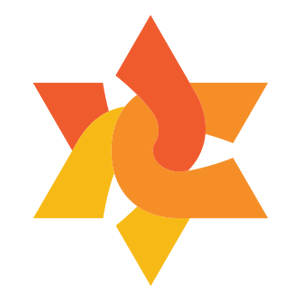Part I
I Kings 4:1-5:8 – The Economy
4:2-6 lists various positions at the court. What positions are listed?
What is surprising about v.4b (=the second part of the verse)?
Commentators have tried to solve the problem. Below are 2 suggestions, which one seems preferable to you? Why? Could you bring an argument to refute either one of these commentaries?
רד”ק מלכים א פרק ד
(ד) וצדוק ואביתר כהנים – היו שרי הכהונה. ואם זה אביתר הוא אביתר בן אחימעץ, תמה הוא, כי הנה שלמה גרשהו מהיות כהן גדול ואמר לו “ענתות לך על שדיך” (מ”א ב כו)?! אלא מן הדומה כי כהן אחר היה שמו אביתר:
Radaq (R. David Qimhi) I Kings 4
(4) Zadok and Abiathar priests they were the ministers of the priests. If this Abiathar is Abiathar son of Ahimaatz it would be strange, since Solomon had sent him away from being a high priest, and said to him Go to your estate at Anatot (I Kings 2:26)?! Rather, it would seem that there was another priest named Abiathar.
רלב”ג מלכים א פרק ד
(ד) וצדוק ואביתר כהנים ידמה, כי אף על פי שגרש אותו מהיות כהן לה’, ואמר לו שילך ענתות, הנה הוכרח לעבד בעת היות צדוק בלתי ראוי לעבודה.
Ralbag (R. Levi b. Gershon) I Kings 4
(4) Zadok and Abiathar priests It would seem that despite having sent him away from being a priest to the Lord, and told him to go to Anatot, he had to serve when Zadok was not fit for serving.
What was the job of the priests? Reading through the list, did any of the perfects have any link to the court other than their official job? How does Solomon compare to his father in setting up the people around him and guaranteeing their loyalty?
Try to get an idea of how much was needed to feed the court and those supported by it for 1 day (5:2-3). A kor =10 Ephah. An Ephah = 10 Omer. An Omer is the amount of manna needed to feed 1 person for a day. On top of this there was need for animal feed. Keep in mind that each priest had to support the court for a month.
Why are verses such as 4:20 and 5:5 appearing in this section?
Part II
I Kings 5:16-32, 9:10-22 – The cost of the Temple
From where is Solomon getting the wood for the Temple? How will it reach Jerusalem? What is the price of the wood?
In addition to the payment to Hiram, Solomon needs workers. How many people worked on the project as forced labor? Who was in charge of them?
In addition there was a need for stones, both quarriers and porters worked on this task. Note their numbers and nationalities.
9:10-13: What else was given as payment to Hiram? (II Chronicles 8:2 seems to have a different version.)
9:20-22: How did Solomon handle the non Israelites in his reign? Compare it with David's approach to the minority population.
I Kings 7:13-23 – Jachin and Boaz, the copper pillars.
Note who the artisan in charge of the copper work. Compare to the list of officials at the court. What difference do you notice?
Where were the pillars placed? They had no religious function and did not exist in the tabernacle (that preceded the Temple.) What was their purpose?
Abarbanel commented about these pillars while discussing the perturbing existence of golden calves in the major shrines of the northern Israelite kingdom. What, in his opinion, was their purpose? What do you think of this idea? How does it fit with Solomons and Davids approach to their dynasty?
Abarbanel I Kings 12:29 (1437 Lisbon -1508 Venice. A late medieval Jewish commentator.)
This was their [the calves] purpose: Since Jeroboam saw that Solomon made the two pillars [I Kings 7:15-22] and placed them at the temple in memory of David and his son Solomon who built the temple, therefore he thought as well to make a memory and sign of his kingdom.
I Kings 10:18-11:10 – The king who was supposed to be the greatest of all
How did the wealth manifest itself in Solomon's court?
Look at Deuteronomy 17:16-20, the law of the king. How does Solomon rank at the end?
What might be the reason for Solomon's marriages with foreign women? What was the (unintended but not surprising) result?
Bringing it all together:
Solomon inherited an empire on a silver platter. The foundations of the kingdom were laid out by David, including a map for Solomon to follow (build a Temple, develop the capital with royal building projects.) Compare the approaches of David and Solomon to their constituents (Israelites, of course) and to minorities. How did each view his position as king? What was the place God, religion and law in the life of each of them? Who would you prefer as your monarch?
Part III
For Inquiring Minds...
This section is intended to give you some background material. Enjoy it or ignore it.
1) Radaq: R. David Qimhi (or Kimhi) wrote a commentary on several biblical books. It is noteworthy that unlike many others who write about Tanakh, most of his commentaries are on the books in NaKh. While he is more wordy than Rashi, some people are more comfortable with his commentary, feeling that it is easier to understand.
For more information about Radaq, try the following: http://en.wikipedia.org/wiki/David_Kimhi
2) Ralbag: R. Levi ben Gershom wrote on several books in Tanakh, and thankfully spent a great deal of time on the NaKh part. His commentary is philosophical in nature.
For more information about Ralbag, try the following: http://www.jewishencyclopedia.com/view.jsp?artid=247&letter=L
3) Jachin and Boaz:
The images of these imposing copper pillars are sometimes detected as design motif on ark-covers (parokhet) in synagogues. For example http://www.biu.ac.il/JH/Parasha/veyakhel/par1.gif




